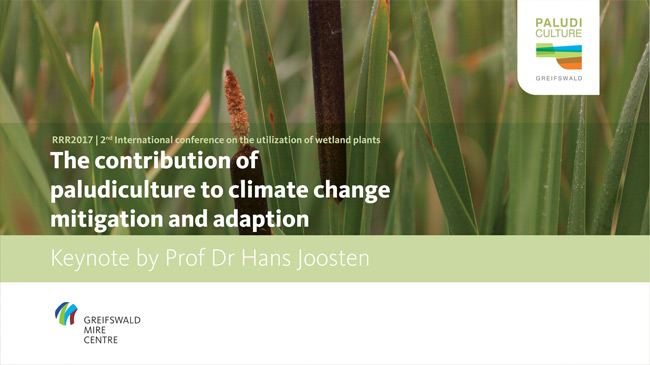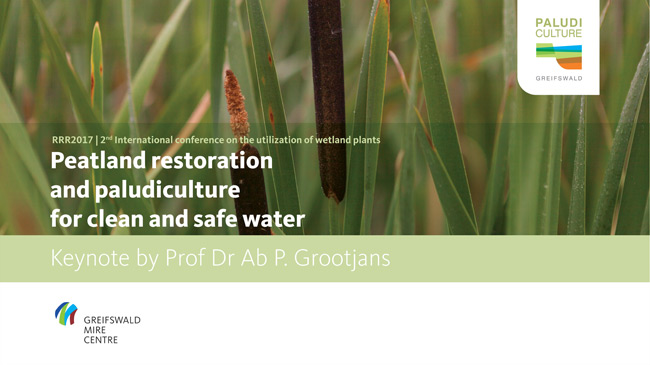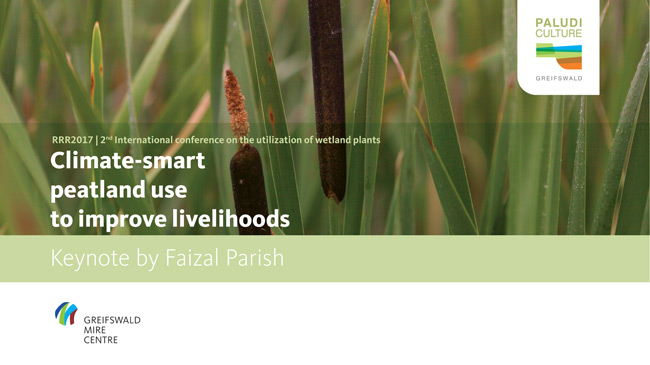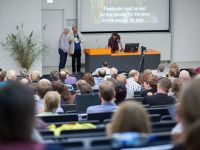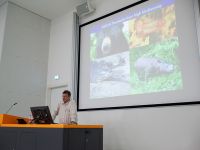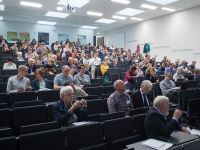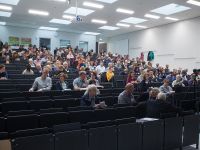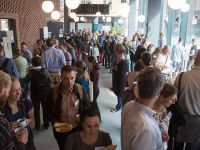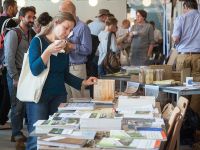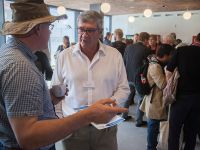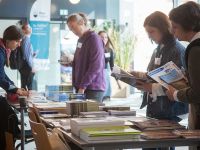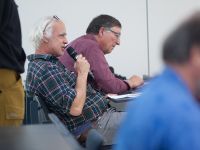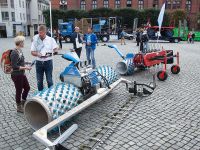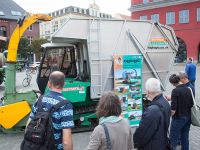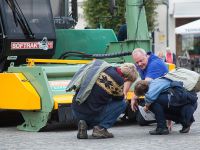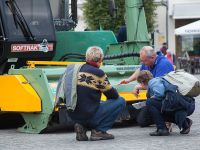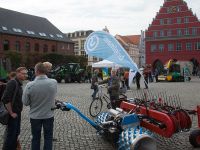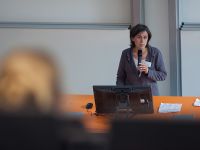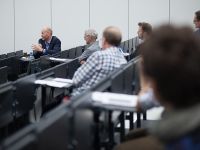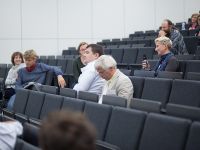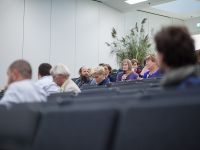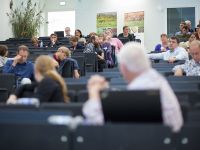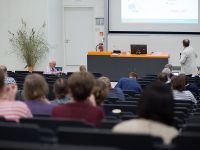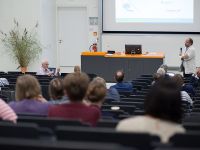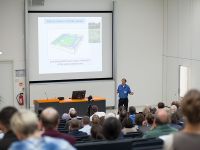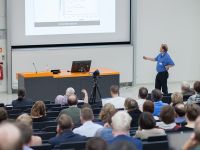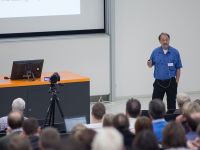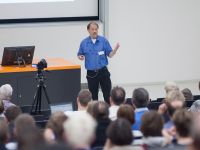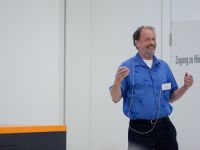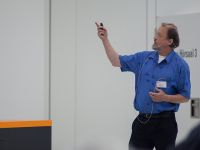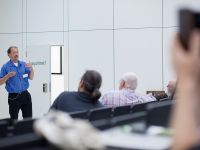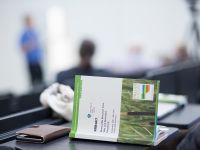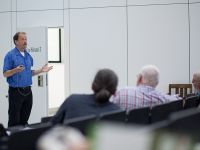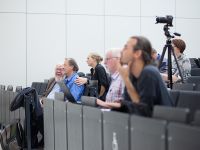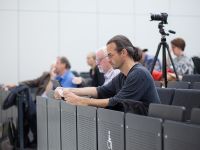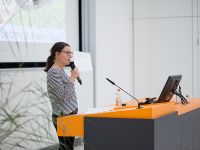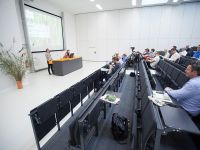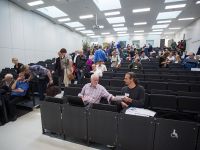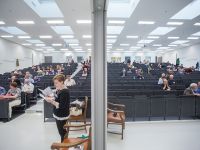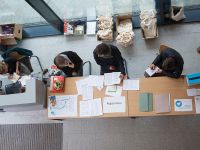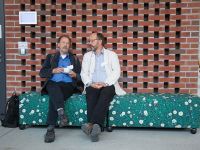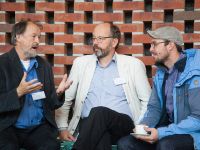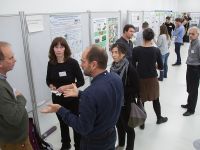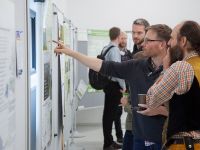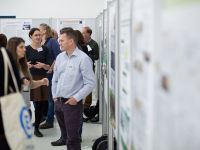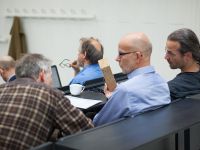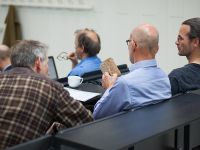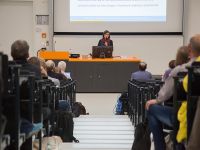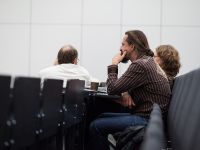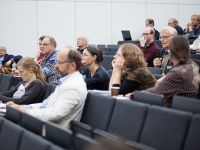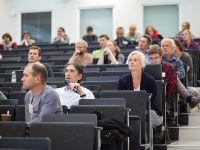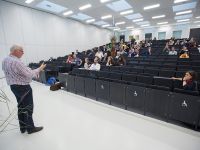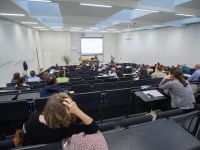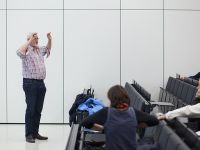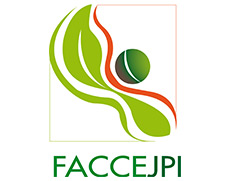RRR2017 - Renewable Resources from Wet and Rewetted Peatlands
2nd International Conference on the Utilization of Wetland Plants
Greifswald, Germany
September 26th - 28th 2017
The use of wetland biomass has a long tradition in human history and has been revived by global research activities on renewable resources. This conference brings together various actors from research, governance and practice that deal with the utilisation of wetland plants. The focus is on paludiculture, i.e. agriculture and forestry on wet or rewetted peatlands. The main objectives of the conference are building and fostering networks, exchanging experience and information, as well as identifying research demands. Therefore, this conference addresses scientists, land owners, land users and environmentalists alike.
Concluding Statement of the RRR2017 Conference
This final statement is an outcome of the second international conference on the utilisation of wetland plants “Renewable resources from wet and rewetted peatlands” (RRR2017).
Proceedings
The proceedings with all abstracts of the international conference are available for download.
Scope
The production and utilisation of wetland biomass offers many opportunities to address the increasing and diversifying demand for biomass and can reduce the competition between biofuel and food production. Wetland biomass can substitute fossil resources as a raw material for manufacturing and industry and for energy production, using both traditional and new processing lines and techniques. The cultivation and exploitation of reed plants like common reed, sedges, reed canary grass and cattail, tree species like alder, or peatmoss (Sphagnum farming) can provide sustainable land use options for peatlands. The rewetting of degraded peatlands for paludiculture reduces greenhouse gas emissions and restores many other ecosystem services like nutrient removal, water retention and habitat provision.
The detailed programme can be downloaded here.
Key topics
A list of all contributions to the RRR2017 conference week can be found here.
Measurements of greenhouse gas fluxes in mown peatlands have started very recently. There are still measurement gaps in certain peatland and vegetation types, and in particular in mown or grazed sites. This session will reflect state of the art knowledge on greenhouse gas fluxes in wet and rewetted peatlands, present outcomes of current measurements in mown wet peatlands, and discuss hypotheses on greenhouse gas fluxes under various forms of paludiculture (e.g. reeds, reed beds, sphagnum lawns) and different conditions (e.g. date of harvest, water tables, trophic conditions).
Mires harbour specialised flora and fauna. In drained peatlands, biodiversity is substantially reduced and much of the former mire flora and fauna has disappeared. In rewetted peatlands, such species may appear again, often after transitional periods. Pilot projects as well as traditional wet land use provide evidence that paludiculture can support certain mire flora and fauna. There is, however, also evidence that certain species suffer e.g. from machine mowing in near-natural peatlands. In this session, we will illuminate biodiversity effects of paludiculture and bring together biodiversity data from recent paludiculture projects.
Wet and rewetted peatlands have a regulating influence on nutrient dynamics in ground and surface waters, both as sinks and sources. Besides carbon and biodiversity aspects, nutrient cycling can be a major driver for restoring degraded peatlands. Data on nutrient input and output of wetland systems, but also the processes behind nutrient dynamics will be presented in this session. Presentations focused on filter potentials of paludicultures, redox-dependent mechanisms for solute adsorption and retention (P), as well as on conversion of substances by nitrification/denitrification (N) and uptake by biomass (paludiculture).
The potentially positive effects of peatland restoration on water retention, flood control and for reducing water management costs is increasingly considered. With paludiculture, agricultural use may be continued despite high or fluctuating water levels. The role of vegetation (on inundation tolerance, nutrient supply, evapotranspiration, harvesting, etc.) and specifically the potential of various paludiculture plants for water retention and flood control was considered in this session.
The productive use of wetland plants in paludiculture is still in its infancy, but globaly is developing rapidly. There is significant potential in plants that are currently not catalogued as economic plants. Understanding their physiology and genetic variation will help to support their cultivation. Selection and propagation of suitable ecotypes can improve productivity and the desired biomass characteristics. In this session, we brought together research results on different wetland plant species, e.g. Phragmites australis and Sphagnum spp., and discussed solutions for tackling challenges in implementing paludiculture by smart species selection.
Manufacturing products from wetland biomass requires specially adapted procedures ranging from plant cultivation, harvest, biomass transport and storage to biomass processing and use. This session covered these topics from an application-technological point of view. Presentations covered all steps from cultivation to the use of the product, as well as studies assessing single steps and quality demands for biomass or properties of products. Presentations may also focus on harvesting or processing technologies and concepts. This session specifically addresses a broad audience of scientists and practitioners alike.
Costs and benefits are the key factors for the implementation of biomass use from wet and rewetted peatlands. The prevailing economic framework has a decisive influence on the economic viability at company level. This session will cover micro-economic as well as macro-economic topics of paludiculture. Micro-economic contributions can include studies on site management, harvest, biomass processing and use. Macro-economic studies may evaluate costs and benefits of peatland use concerning the provision of ecosystem services or disservices. This session covers also life cycle assessments, and studies considering, comparing and quantifying environmental impacts (i.e. greenhouse gas emissions, energy, nutrients and other flows) of peatland use are welcomed.
The implementation of paludiculture may be fostered or hampered by the policy framework and legal regulations. The eligibility for agricultural subsidies, e.g. provided by the EU Common Agricultural Policy, plays a fundamental role for implementing paludicultures in the EU. Incentives for rewetting and/or for establishing adapted wetland plants may improve the willingness to introduce paludicultures on formerly drained peatlands. Payments for the provision of ecosystem services such as carbon storage, nutrient removal or water retention can support the profitability and competiveness of paludiculture. We encourage presentations on the following aspects: analyses on incentives and constrains in different countries; How can the legal and policy framework account for the provision of peatland ecosystem services and disservices? What are the pre-requisites for ensuring the acceptance of incentives in policy and practice? Which (national) solutions may serve as best practise examples to overcome constraints and to support paludiculture or the utilisation of wetland biomass?
Pilot projects and best practise examples play a vital role for implementing paludiculture at large scale. Pioneers adapt traditional uses, gain first experience with new cultivars or new processing avenues, and develop skills in establishing, managing, harvesting and using wetland plants. Such demonstration projects are invaluable for gathering hands-on knowledge. At the same time, working beyond experimental scale is essential for researchers to get real-life data on economics and side effects, for deriving sound recommendations and for vividly communicating paludiculture to farmers and politicians. We look forward to a wide range of case studies from various countries.
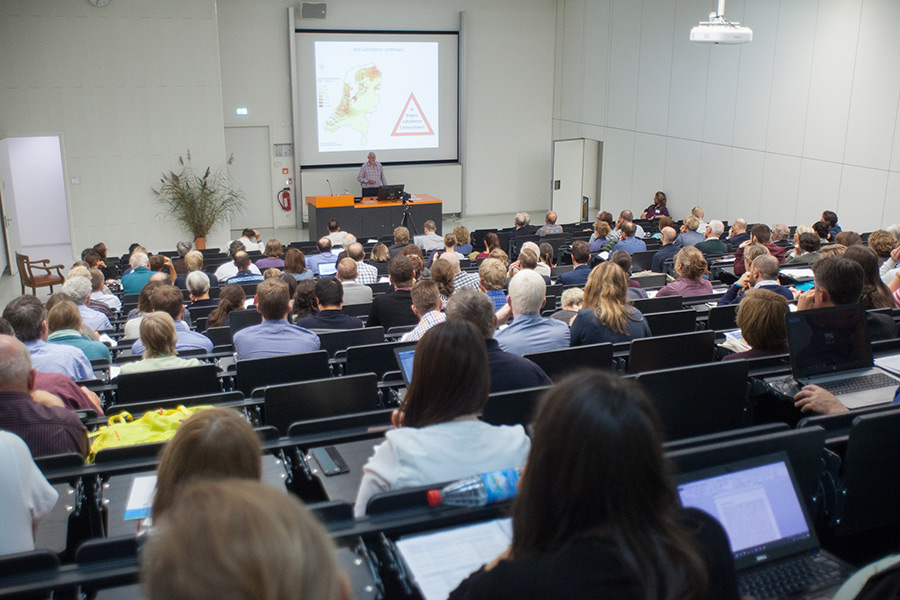
Keynotes
The conference included three keynotes on paludiculture and climate change, water and improved livelihoods.

CV
Hans Joosten studied biology and worked as researcher and policy officer in the Netherlands. Since 1996 he leads the Department of Peatland Studies and Palaeoecology of Greifswald University (Germany), since 2008 as an Extraordinary Professor. A key topic of his research group is the development of paludiculture (a term he coined in 1998). In 2016 he, together with Wendelin Wichtmann and Christian Schröder, edited the first textbook about paludiculture. Hans Joosten is Secretary-General of the International Mire Conservation Group and since 2009 intensively involved in UNFCCC and IPCC, especially with respect to emissions from organic soils, and in FAO in advancing climate-responsible peatland management. In 2013 he was awarded the European CULTURA Prize for Sustainable Land Use, and the German Federal Research Award Sustainability for his project Vorpommern Initiative Paludiculture.
The contribution of paludiculture to climate change mitigation and adaptation
Globally, drained peatlands are responsible for 5% of all anthropogenic greenhouse gas emissions. In 50 countries drained peatlands emit > 10 %, in 25 countries even > 50 % compared to national emissions from fossil fuels and cement. Therefore, peatlands must play a major role in reaching the targets of the Paris Agreement. The root cause of peatland emissions lies in agriculture, which had its cradle in steppes and semi-deserts and consequently transforms mires into dry landscapes. The results are everywhere the same: gigantic greenhouse gas emissions and other forms of severe environmental damage. Sustainable utilisation of peatlands appears only to be possible under wet conditions. Paludiculture aims at reducing drainage-induced emissions, preserving the peat body as a sustainable base of production, while generating marketable products. The keynote gives an overview of climate change mitigation and adaptation perspectives in various parts of the world, discusses legal, political, and economic obstacles and challenges, and presents a way forward for the implementation of paludiculture as an important climate change mitigation and adaptation strategy.
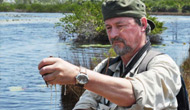
CV
Ab Grootjans worked at the University of Groningen between 1975 and 2016 and at the Radboud University Nijmegen between 2007 and 2017. His main field of expertise is eco-hydrology of wetlands. He dealt with projects ranging from eco-hydrological approaches on the landscape scale to very detailed research on the habitat scale. For example, he worked on the restoration of small dune wetlands along the Dutch and German coast and on developing new strategies for a more natural and dynamic coastal development. His work on the restoration of damaged peatlands helped improving restoration activities in various parts of the world including the former GDR, Slovakia, Latvia, Russia, Ireland, Tierra del Fuego, Japan, Australia and South Africa. He has also been active in the Dutch Knowledge network of researchers and managers (OBN) aimed at developing restoration projects in the Netherlands (1990-2015).
Peatland restoration and paludiculture for clean and safe water
The area of rewetted peatlands in Europe is still small, but increasing - mainly because agricultural and silvicultural use of many peatland areas is economical less interesting. In many EU countries the continuation of agricultural use in such areas is driven by subsidies. In other words, citizens that do not directly profit from the intensive drainage of wetlands are paying the bills. And the costs of maintaining agricultural use in drained peatlands are increasing due to subsidence of the peat soils. That is why in densely populated areas, such as in the Netherlands, such areas are now used to prevent flooding in cities due to more intensive rain events during summer. The effects of these global change initiated events can be reduced by storing large amounts of surface water in nature areas and in low-lying agricultural areas on peat. This calls for alternative use of such areas. Paludiculture is by far the most sensible thing to do; use these areas wet. However, new investments in infrastructure and in modern equipment to harvest these areas are urgently needed. I propose that money that is now spent on continuing the environmental unfriendly way of land use (subsidies to both farmers and nature protection agencies) has to be transferred to organisations and private companies that are willing to use peatlands in a more sustainable way.
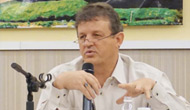
CV
Faizal Parish has been the Director of the Global Environment Centre, a Malaysian non-profit organization working throughout East and Southeast Asia on forest and peatland management, biodiversity, water resources and climate change since 1998. He is originally from the UK but is currently a Malaysian Permanent Resident and has been living in Malaysia since 1983. He is a wetland ecologist with more than 30 years’ experience in assessment and management of peat swamp forests, mangroves and river systems. He has worked with the ASEAN Secretariat since 2000 to establish the ASEAN Peatland Management Initiative and ASEAN Peatland Management Strategy 2006-2020 (APMS) and the ASEAN Programme on Sustainable Management of Peatland Ecosystems 2014-2020 (APSMPE) – all key ASEAN initiatives to conserve peatland biodiversity and ecosystems. Faizal Parish has been actively working on peatland and biodiversity conservation in South East Asia since 1983, leading assessments of wetland biodiversity in many ASEAN Member States. He coordinated a global assessment on peatlands biodiversity and climate change in association with CBD from 2003-2008, andworked on restoration and management of peat swamp forests for more than 25 years . He was the Co-chair of the Roundtable of Sustainable Palm Oil (RSPO) Peatland Working Group (2009-2012) and developed the RSPO Manual on Best Management Practice for management and rehabilitation of natural vegetation associated with oil palm cultivation on peat. He is a member of the International Mire Conservation Group for more than 10 years.
Climate-smart peatland use to improve livelihoods
Globally large areas of peatland have been targeted for conversion to agriculture and intensive forestry activities which have been one of the main drivers for peatland degradation. Peat extraction for energy and horticulture is another significant but smaller scale use. In Southeast Asia, there used to be nearly 25 million ha of peatland which was naturally vegetated with diverse peat swamp forest with more than 250 species of trees many of which have significant socio-economic value. More than 70% of this peatland has been heavily exploited and degraded and large areas converted to monoculture plantations of Oil Palm and Acacia. Many areas have been cleared, drained and burnt but subsequently abandoned due to inappropriate land development approaches. Some 10-15 million ha of degraded peatland is found in the region with more than 4 million ha burnt repeatedly in recent years - constituting one of the most important sources of GHG emission globally. The rewetting and rehabilitation of these peatlands provides a major opportunity for expansion of paludiculture in the region. There are more than 50 species of tree that are potentially suitable to be cultivated in re-wetted peatlands - but large scale cultivation is still at a relatively early stage. The presentation will highlight initial progress and future opportunities and challenges for paludiculture in the region.
Funding
The organisation of the 2nd international conference on the utilization of wetland plants was supported by:











